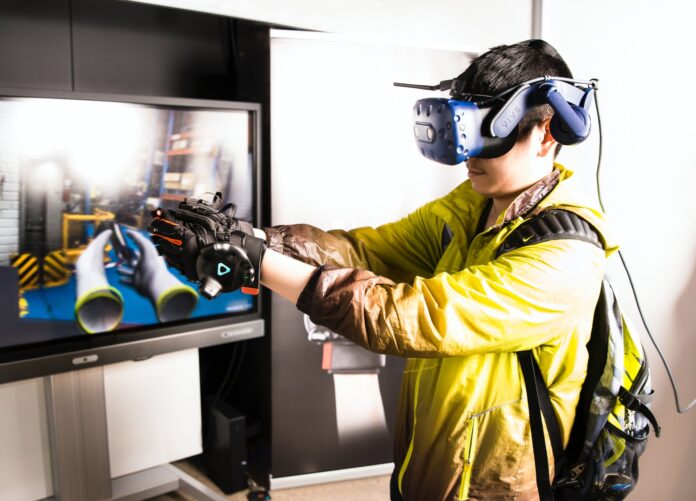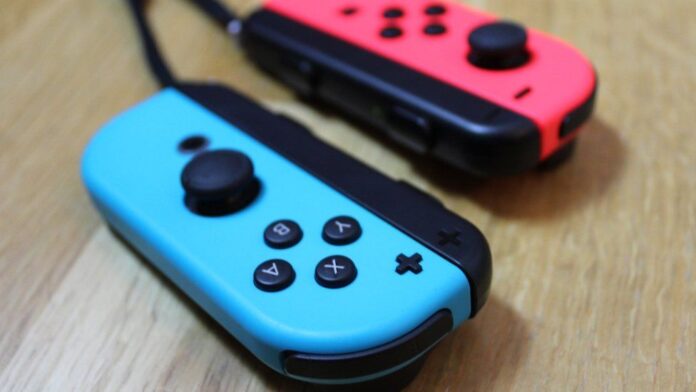The gaming industry is a rather wide and considerable one. Apart from the enormous amount of money in it, there are also millions of players and creators engaging with the industry daily. The industry is far from stagnant, constantly changing and advancing with all the new finds in various fields of technology. So much so that the experience with video games can change greatly in just a few years. Today, we are looking into the future of the industry and gaming at large.
Virtual Reality

Even back in the older days of the hobby, the idea of a fully immersive experience has been a dream just about any developer wanted to achieve. Some attempts were made but the overall field of Virtual Reality in gaming didn’t really advance. Some of these attempts are even remembered as one of gaming’s huge failures, such as the Nintendo Virtual Boy.
However, in the last decade, great advances in Virtual Reality technology have been made. The original VR headsets had a few games associated with them which were more focused on showing off hardware than actual gameplay. While the tech was still new, there were multiple attempts of creating games that use the system to its fullest. Sadly, most of these didn’t leave much of an impact. While the tech was figured out, the way to make games for it wasn’t. Motion sickness and dizziness were common complaints even for games that didn’t have too much movement.
However, in recent years, the way to make VR easier on the body and more engaging to play has been furthered. Some absolutely engaging games have been released for the system, including a new installation of the Half-Life franchise. Suffice to say, game developers are getting comfortable with the differences between the regular consoles and VR, managing to bring the most out of this new way of playing games. Because of this, it’s realistic to assume we’ll see VR games becoming more prevalent and enjoyable in the upcoming decades. The other problem currently is the cost of all the hardware. Having a VR setup is pricey making it a lot more niche right now. Hopefully, with the passage of time, this issue of the price will become less impactful as competition on the market makes way for cheaper VR systems.
New gadgets to immerse ourselves with

In the same vein as VR, we have various additions to our gaming experience that could lead to a similar improvement in immersion. The concept is nothing new, even back in the Guitar Hero days you could purchase controllers in the shape of instruments to truly indulge the rock star fantasies the game provided. Even simpler peripherals such as good headphones go a long way to improve this experience.
Of course, everybody wants more immersion. That’s why the market for gaming peripherals and gadgets sees a slew of new additions. For example, not too long ago the motion control trend swept the industry. No matter what system you were gaming on there were offers of more interesting and immersive controls. Nintendo’s Wii even based the entire console on this interesting and engaging premise, leading to one of the best-selling consoles. However, programming games to utilize the hardware was hard for third-party developers and it was no different on other systems either. Nowadays, we see this technology employed in smaller doses with consoles such as PS5 and Nintendo Switch where some minor mechanics may be associated with the physical motion of the gamepad.
We are dishing this information out to reinforce the following statement, video game players like immersing into the game but in a way that compliments the mechanics. If at any point these supposedly immersive practices impede the enjoyment they end up becoming more of a hassle than improvement. Thankfully, the more gaming progresses the more interesting changes happen. Haptic feedback has been around since the 90s but even nowadays developers find new and fun ways to make our peripherals transfer the impact of action within the game.
There’s even Woojer Vest which transfers the haptic feedback feel to your entire body while you wear it. It’s a widely available and functional item too, as you can see by checking out some videos such as the one below:
We could go on and on about all the new additions to the interesting peripherals and probably never get to the end of them. The fact of the matter is that there’s a market for such items as well as room to improve them. According to drifted.com, in the future, such technologies will be refined and more accessible, making them more common in everyday gaming experiences.
Cloud Gaming

The problem of escalating hardware and system requirements means that many people who cannot follow the constant stream of exponential upgrades get left behind. While this may not bother some, there are plenty of people who prefer to play the newest games without having to dip too deep every few years to stick with the newest releases from the industry.
The solution to these problems comes in the form of Cloud Gaming. The idea behind Cloud Gaming is that video games aren’t being run by a physical system in your home. They are running from one located elsewhere and the responses to your inputs are being transferred through the internet. In theory, this makes it so you can play the newest games without the newest console or PC. This type of gaming especially helps those who may have only a game or two that they want to play on a new console, making it possible to engage with those games without spending a ton of money on the physical system.
Of course, there’s a catch. Cloud Gaming hasn’t advanced quite far enough yet. The basics are there but the execution leaves a lot to be desired. Latency, low visual quality, and frame drops are frequent complaints you can find. Sure, there are games that will run fine or some that do not require impeccable performance to be enjoyable but that doesn’t neglect the existing problems.
Future may bring with it new solutions that could make Cloud Gaming not only better but maybe even a real alternative to physical consoles. Of course, there are many concerns and questions that are yet to be resolved. However, considering the huge advancements that have happened in the past two decades it’s not unreasonable to assume that Cloud Gaming may be the future of gaming.
Conclusion
The gaming industry may be young in comparison to others but it has spread out quite far and wide. On top of that, it’s an industry that constantly innovates and changes which makes its future possibilities incredibly interesting.
With the passage of time, we may see currently evolving technologies become mainstream and maybe even an integral part of the gaming experience. Regardless of whether they are one of the ones we’ve mentioned or not, considering how much interesting tech there is out there. No matter which one it is, it’s sure to cause a lot of interesting changes throughout the industry.







